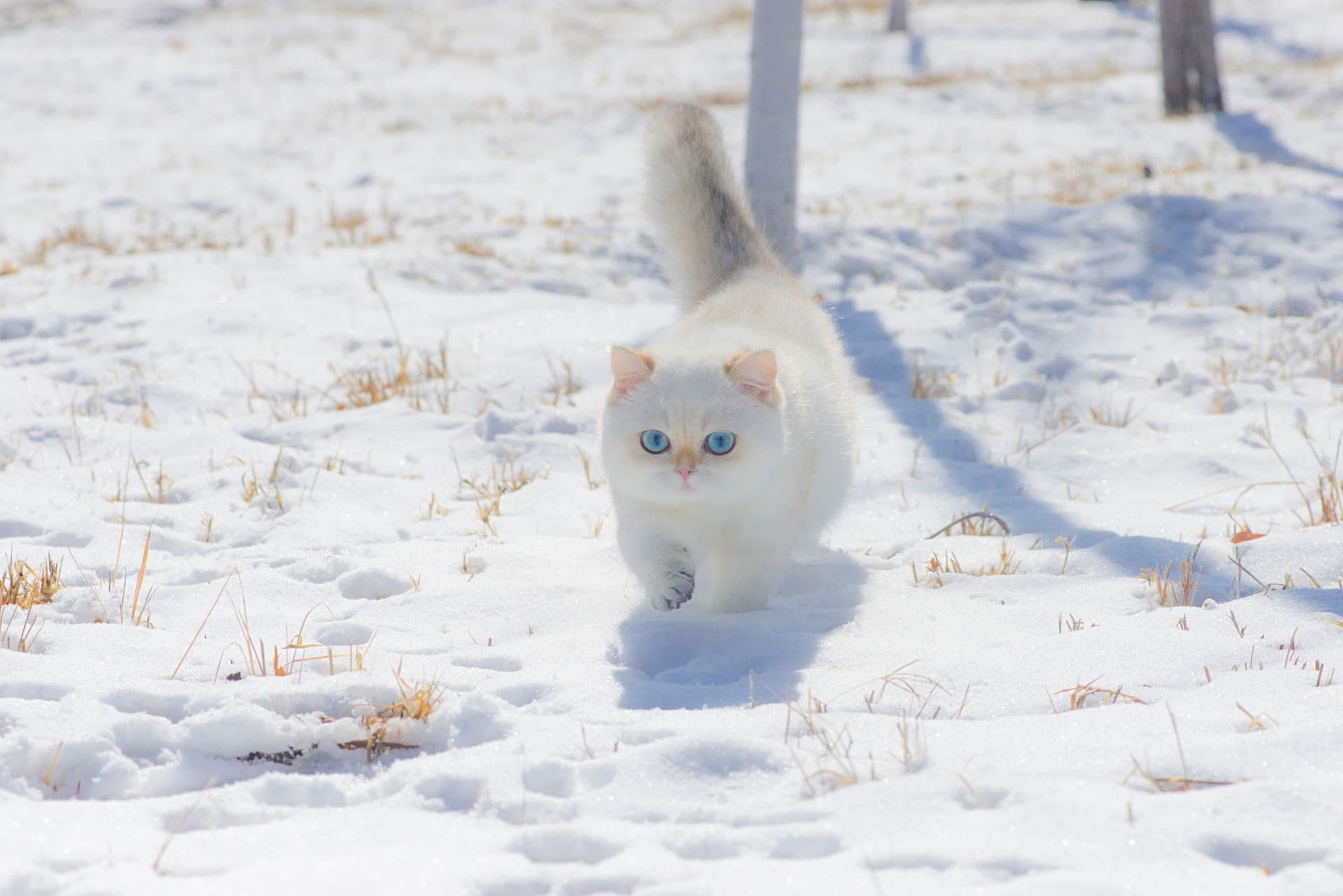Cats are one of the fuzziest animals. However, despite their fur, they can still experience cold like us. They are naturally warm-blooded animals as they are descendants of the African Wildcat. Thus, they prefer warmer climates.
Their fur is an excellent insulator meaning that they often feel warmer than us. Although it doesn’t mean that they are immune to cold and low temperatures. How cold can cats handle? Let’s find out more.
Do Cats Get Cold?
Thanks to their thick fur, cats stay warm most of the time in the winter. This is great as many cats like spending hours and hours outside. This doesn’t mean that they can completely survive the cold. If you leave them in the cold for a long period, they can develop frostbite and even hypothermia.
What Temperature Is Too Cold for Cats?
Generally, most cats feel the cold weather when it’s below 7 degrees Celsius. Although many older cats might seek extra warmth when it’s around 10-19 degrees Celsius. Many factors come into play that make your cat sensitive to cold.
Their age, health, and breed best determine your cat’s tolerance to cold. Regardless, low temperatures can be very uncomfortable and detrimental to cats, so it’s important to give them a warm shelter.
Signs of Hypothermia in Cats
When cats have hypothermia they exhibit several signs you can look out for if you want to make them feel better:
Cold nose, ears, and paws
Slow heart rate and difficulty breathing
Feeling weak and lethargic
Shivering
Unresponsive or loss of consciousness
Pale gums
If you notice these symptoms showing, it is ideal to wrap them in a warm blanket and take them somewhere you can warm them up gently. Make sure the place is quiet and avoid giving them heating pads as they can cause burns. It’s important to call your vet after taking care of your cat.
Signs of Frostbite in Cats
Frostbite is a condition that develops on cats’ skin and tissue when exposed to extreme cold temperatures. It most commonly affects areas that are not very much covered in fur such as their nose, ears, paws, tails, and eyelids.
Frostbite can become quite severe and lead to loss of limbs and other parts. It’s important to recognize symptoms and react immediately:
Pain and swelling
Discolorations
Blisters and ulcers
Cold and firm skin
Dead skin area (necrosis)
Frostbite can become quite severe and lead to loss of limbs and other parts. It’s important to recognize symptoms and react immediately by calling your vet.
How Do I Keep My Cat Warm When It’s Cold Outside?
It's important to know how to keep your cats safe and warm. It is especially important during the winter when being outside might be harmful for your cat. A lot of cat owners allow their furry family members to roam outside whenever and whenever they choose.
Watch Their Weight
Your cat's weight is easy to underestimate, especially when their warm winter coat is covering them up. When giving your cat a full examination, feel for bony hips or shoulders since these might be signs of illness and weight loss.
It is important to keep an eye on your cat's weight when they spend more time inside, as being less active might lead to weight gain.
Make Sure Their Bed Is Nice and Cozy
No matter if it's on your bed, on a cat bed, or nestled on the ledge, your cat will undoubtedly have a preferred sleeping place. The secret to a happy cat during winter weather confinement is knowing what temperature cats like and giving them a nice cozy place they can snuggle up in.
Watch for Stiffness
Cats are outdoor creatures. That’s why it might seem a bit difficult to keep them inside for the whole winter. You can entertain your kitty by playing games together and doing things they find enjoyable. However, if you do happen to notice that their movements might seem a bit stiff, you can check up with their vet. Cold temperatures can make their joints stiffer and interfere with their movement.
How Will I Know If My Cat is Cold?
It can be hard to know whether your cat is cold or not. Cats are quite good at masking their discomfort. However, there are several signs that you can pay attention to, to know whether your cat is cold or not.
Curling into a ball - Although this is the preferred resting posture for many cats, there are occasions when it indicates that the cat is feeling chilly. When a cat senses chilly, they will also tuck their tail and paws beneath their body to stay extra warm.
Cold ears, paws, and tails - Your cat's extremities may get chilly to the touch if they are cold. To determine whether your cat is chilly, feel the tips of their paws, tail, and ears. If they feel cold, your cat probably is cold, as well.
Sleeping by a heat source - Additional telltale signs that your cat is feeling chilly include waking up to get closer to a heat source or abandoning their regular sleeping spot to lie by the radiator.
Conclusion
Can cats survive in the cold? The answer will depend on several factors, including temperature and shelter availability. But it’s better not to test this theory, as cats are susceptible to cold the same way we are. It is important to make your kitty warm and cozy as much as possible. Even if you do let them outside, make sure to secure them some locations they can comfortably go to if feeling cold.
Frequently Asked Questions
Do cats get colds?
Cats, like us, are very susceptible to colds. They often manifest in the form of infections, hypothermia, and even frostbite. This is caused by prolonged extreme exposure to cold weather. If you think your cat might be sick, it might be time to contact a veterinarian.
What is the normal cat temperature?
The average body temperature in cats ranges from 38°C to 39°C. Their body temperature is similar to ours, so if you notice any drastic changes, make sure to call your vet and ask for advice.
Why are my cat's ears cold?
There are many reasons why your cat's ears might be cold. It can be due to low temperatures or some stressful situations. If you notice that your pet has cold ears for a long time, make sure to pay a visit to a veterinarian.



